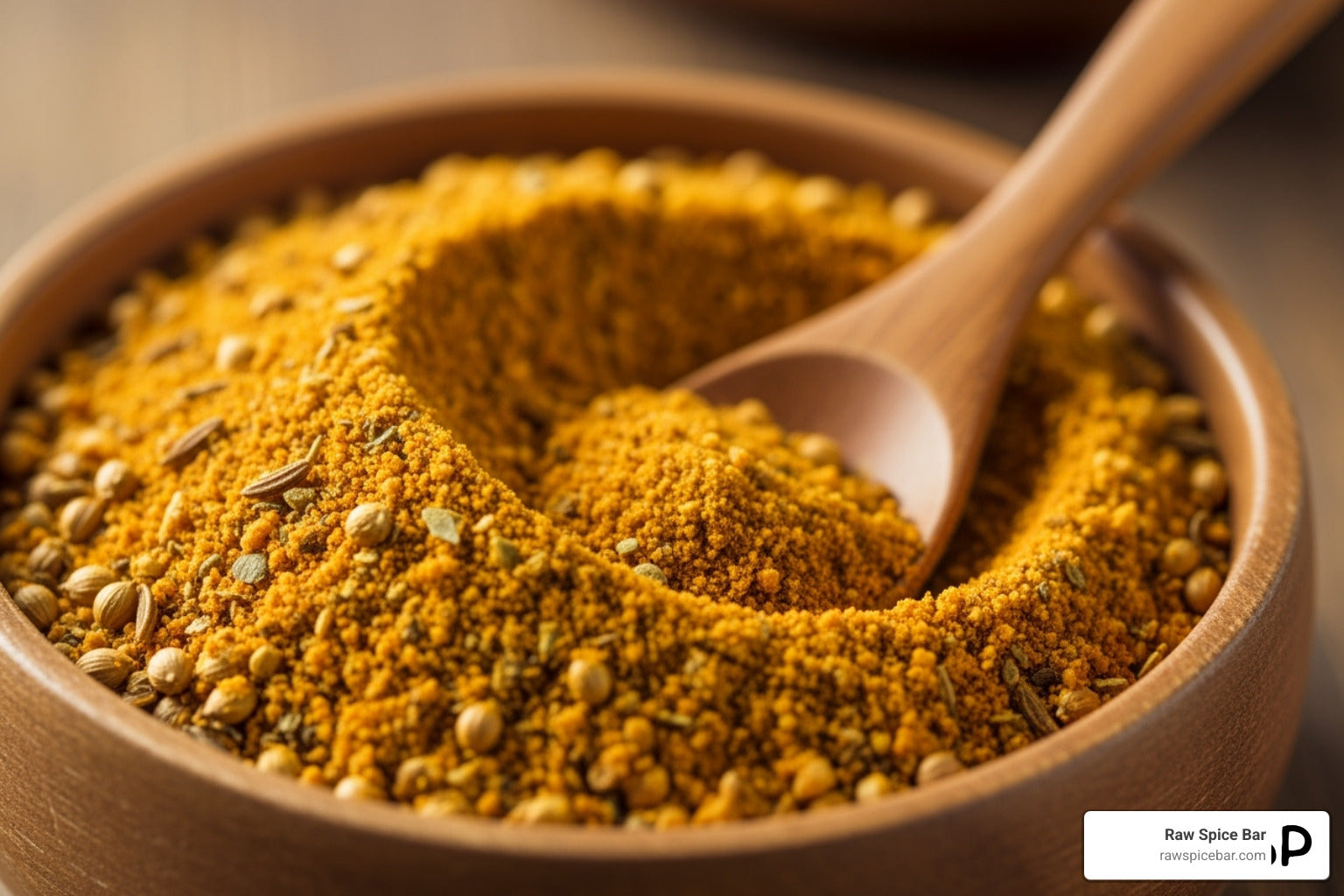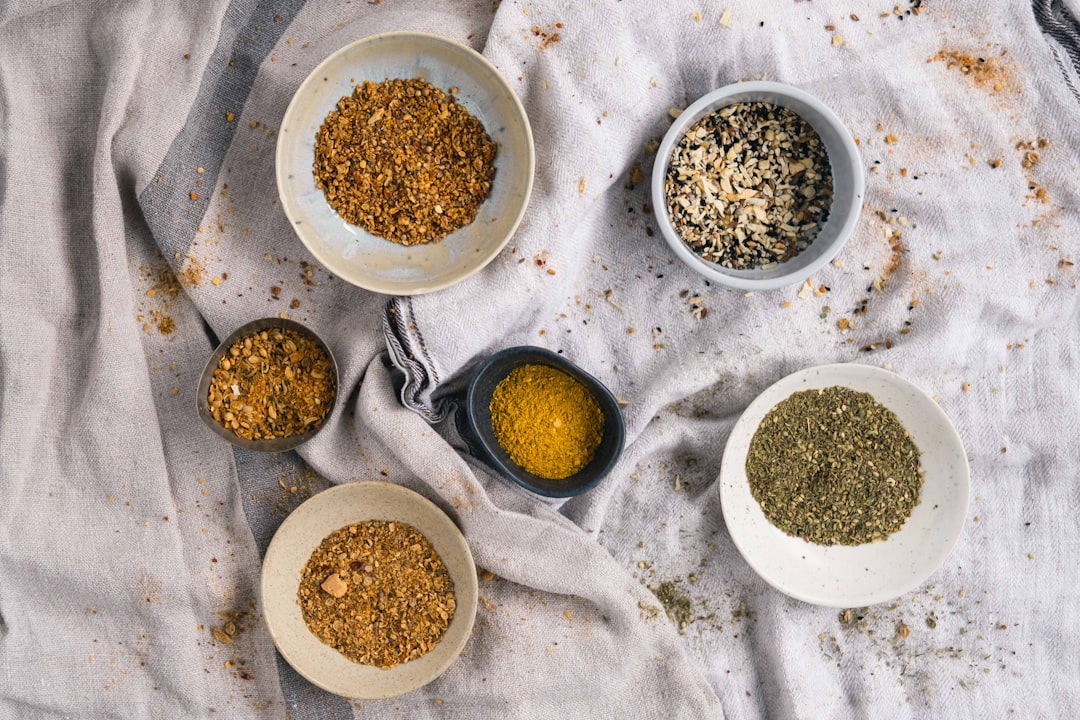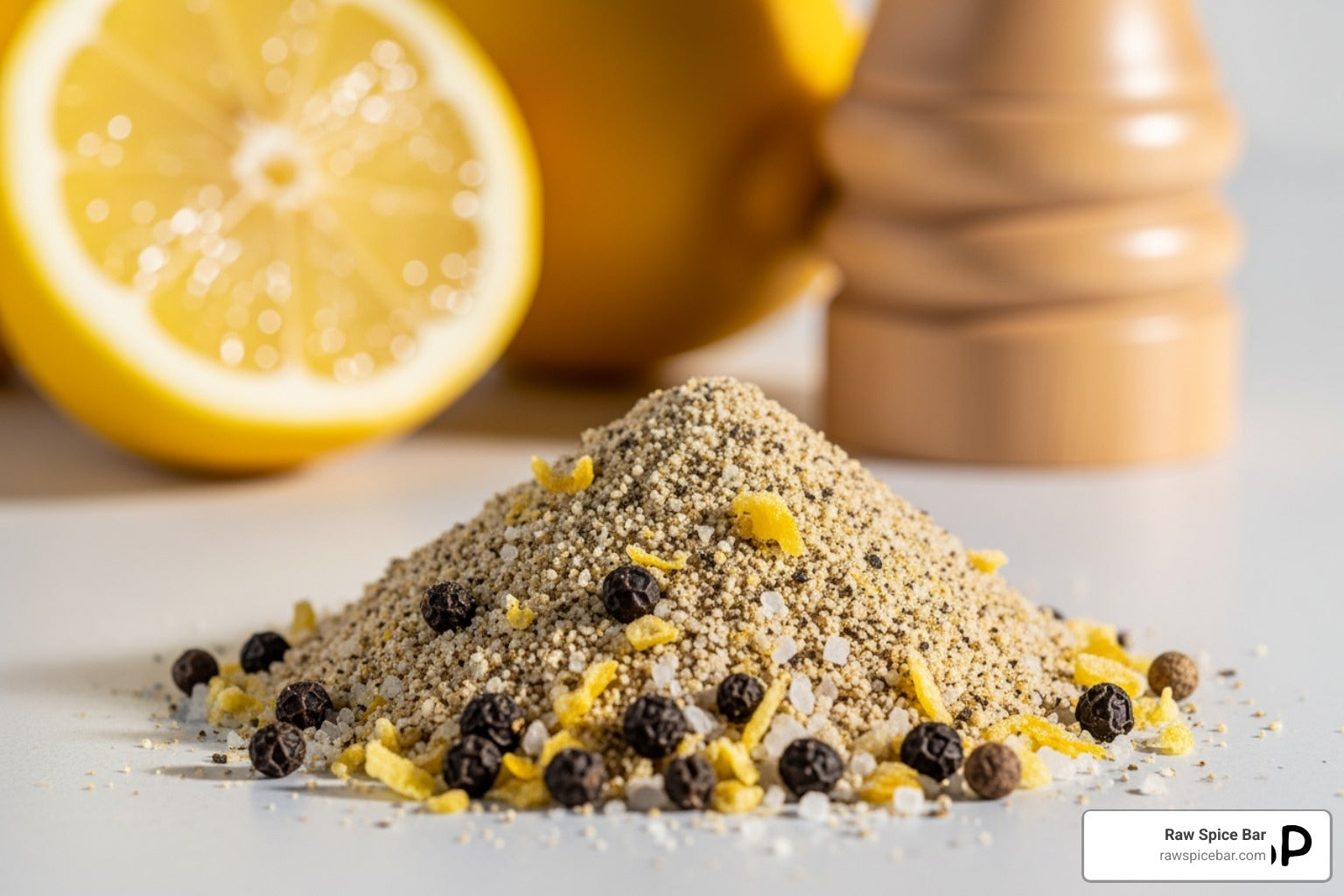More Than Just Flavor: Why Herbs and Spices Are Your Kitchen's Hidden Health Heroes
When searching for the top 20 healthiest herbs and spices, you're looking at nature's most potent medicine cabinet disguised as everyday seasonings. Here's your quick reference guide:
The Top 20 Healthiest Herbs and Spices:
- Cinnamon - Blood sugar control
- Turmeric - Anti-inflammatory powerhouse
- Ginger - Nausea relief and digestion
- Garlic - Heart health and immunity
- Rosemary - Memory and brain function
- Cayenne Pepper - Metabolism booster
- Sage - Cognitive improvement
- Peppermint - Digestive aid
- Oregano - Antioxidant champion
- Fenugreek - Blood sugar regulation
- Holy Basil - Stress relief
- Saffron - Mood improvement
- Cilantro/Coriander - Detoxification
- Black Pepper - Nutrient absorption
- Cardamom - Blood pressure support
- Cloves - Antioxidant powerhouse
- Paprika - Eye health
- Nutmeg - Brain health
- Parsley - Vitamin powerhouse
- Thyme - Antimicrobial protection
Herbs and spices pack ten times more antioxidants than fruits and vegetables. That sprinkle of cinnamon on your morning coffee? It's actively lowering your blood sugar. That pinch of turmeric in your curry? It's fighting inflammation as effectively as some prescription drugs.
These kitchen staples contain powerful compounds called phytochemicals - natural plant chemicals that protect your body from disease. They're also your secret weapon for cutting back on salt and sugar without sacrificing flavor.
As the ancient saying goes, "Let food be thy medicine and medicine be thy food." Modern science proves this wisdom right. Research shows that regular spice consumption can help prevent cancer, reduce heart disease risk, and even protect your brain from aging.
I'm Joseph Rosenblatt, founder of Raw Spice Bar, and I've spent years sourcing and crafting premium spice blends that bring both incredible flavor and health benefits to your kitchen. Through my work developing the top 20 healthiest herbs and spices into accessible blends, I've seen how these natural ingredients can transform both your cooking and your wellbeing.

Similar topics to top 20 healthiest herbs and spices:
The Top 20 Healthiest Herbs and Spices to Lift Your Cooking
These twenty seasonings are tiny nutritional powerhouses. Their antioxidants, anti-inflammatory compounds and unique phytochemicals can help steady blood sugar, calm inflammation, sharpen memory and more—no mega-doses required. A daily pinch folded into normal recipes is enough to make a difference. Below you\u0000b4ll meet each herb or spice, its headline benefit, and one easy way to use it tonight. Ready to turn your pantry into a wellness lab? Let\u0000b4s dive in.
1. Cinnamon: The Sweet Spice for Blood Sugar Control
Warm, sweet and woody, cinnamon\u0000b4s goodness comes from cinnamaldehyde. Human trials show that just 1\u0000bd\u0000a0teaspoons (about 3\u0000a0g) a day can drop fasting blood sugar by up to 29 % while modestly lowering LDL cholesterol. Opt for Ceylon ("true") cinnamon if you season food daily; it contains far less coumarin than common Cassia. Sprinkle on oatmeal, stir into coffee or add a pinch to Moroccan stews for gentle sweetness with benefits.
Scientific research on cinnamon's effect on blood sugar levels

2. Turmeric: The Golden Anti-Inflammatory Powerhouse
Curcumin, the compound that makes turmeric glow, rivals some anti-inflammatory drugs in lab studies. The catch? It\u0000b4s poorly absorbed alone. Pair any dash of turmeric with a crack of black pepper; piperine boosts curcumin uptake by roughly 2000 %. Whisk 1\u0000b2 tsp into soups, curry or golden milk for daily joint, brain and heart support.
Curcumin is a remarkably powerful antioxidant
3. Ginger: The Ultimate Soother for Nausea and Digestion
That zesty kick comes from gingerol. About 1 g (½ tsp ground or 1 inch fresh) reliably eases nausea from morning sickness, chemo or motion. The root is also anti-inflammatory, making it handy for sore joints. Grate into stir-fries or steep fresh slices for a calming tea.
Ginger for nausea and morning sickness
4. Garlic: The Pungent Protector for Heart Health
Crush, wait 10 minutes, then cook—this simple step lets allicin form, the sulfur compound that drops LDL cholesterol 10–15 % and can lower blood pressure. Use raw in dressings or roast whole heads for a mellow spread. A delicious way to strengthen both heart and immune system.
Garlic supplementation for the common cold
5. Rosemary: The Aromatic Herb for Brain and Memory
Inhaling rosemary\u0000b4s pine-like aroma can sharpen recall, and its rosmarinic acid may protect aging neurons. Toss a small sprig onto roasted vegetables or infuse olive oil for daily cognitive support.
Therapeutic effects of rosemary on nervous system disorders
6. Cayenne Pepper: The Fiery Spice for Metabolism
Capsaicin revs calorie burn (about 5 % for a short window) and tames appetite. A mere pinch—roughly 1 g—in chili, tacos or even hot cocoa delivers the effect. Start small to gauge your heat tolerance.
Capsaicin's role in weight management
7. Sage: The Savory Herb for Cognitive Function
Sage stalls the breakdown of acetylcholine, a key memory chemical. In a 4-month study, patients with mild Alzheimer\u0000b4s improved after daily sage extract. For kitchen use, crisp a few leaves in butter and drizzle over poultry, pasta or squash.
Sage's potential for cognitive improvement
8. Peppermint: The Refreshing Aid for Digestion
Menthol relaxes gut muscles, easing IBS cramps and post-meal bloat. Sip peppermint tea or chop fresh leaves into fruit salads for a cooling digestive assist. Skip if you struggle with reflux.
Peppermint oil for irritable bowel syndrome (IBS)
9. Oregano: The Antioxidant-Rich Herb for Immunity
Oregano outranks many fruits on the antioxidant scale and supplies antimicrobial carvacrol and thymol. Sprinkle dried oregano into tomato sauces or over roasted veggies to give everyday meals an immune-boosting edge.
Oregano's antioxidant and anti-inflammatory properties
10. Fenugreek: A Maple-Scented Ally for Blood Sugar
Toast the bitter seeds and they bloom into a subtle maple aroma. Just 1 g of fenugreek extract a day improved insulin sensitivity in trials. Add a pinch to curry or sprout the seeds for salads—diabetics should track glucose as levels may drop.
Fenugreek's effect on insulin function
11. Holy Basil (Tulsi): The Adaptogenic Herb for Stress Relief
Called “the incomparable one” in Ayurveda, tulsi helps lower cortisol and tame anxiety. Steep 3–4 fresh leaves (or ½ tsp dried) for a peppery, clove-like tea, or toss into Thai stir-fries for calm with flavor.
Holy basil's immune-boosting effects

12. Saffron: The Luxurious Spice for Mood and Mind
Crocin and safranal tint dishes gold and may lift mild-to-moderate depression as effectively as some SSRIs. Soak a pinch of threads in warm water, then stir into rice, paella or risotto. Culinary amounts are safe—and thankfully small, given the price!
Saffron for neuropsychiatric and age-related diseases
13. Cilantro & Coriander: A Two-in-One Herb and Spice
Fresh cilantro leaves help chelate heavy metals, while the warm coriander seed eases digestion and may lower blood sugar. Toss cilantro onto tacos or blend into chimichurri; grind coriander into curries. If cilantro tastes soapy to you, blame genetics and stick with the seeds!
Linalool in coriander may protect the brain
14. Black Pepper: The King of Spices for Nutrient Absorption
Piperine boosts absorption of curcumin (and other nutrients) by up to 20-fold, plus offers its own antioxidant perks. Grind fresh pepper over virtually any savory dish—simple, safe, and highly effective.
Piperine may reduce the risk of certain cancers
15. Cardamom: The Aromatic Pod for Blood Pressure
Citrusy-sweet cardamom lowered both systolic and diastolic pressure in a small 12-week study. Crack whole pods for curries or Swedish buns; remove before serving for a gentle, heart-friendly perfume.
Cardamom's potential to lower blood pressure
16. Cloves: The Pungent Bud with Potent Antioxidants
Cloves boast sky-high ORAC scores thanks to eugenol, a compound that is both antioxidant and antimicrobial. Use sparingly in baked goods, mulled cider or slow-cooked meats; remove whole buds before serving.
Eugenol acts as a natural antioxidant
17. Paprika: The Colorful Pepper for Eye Health
One tablespoon of sweet paprika supplies 100 % of daily vitamin A plus capsanthin, a carotenoid that shields retinas. Bloom the spice briefly in oil, then ladle into stews, rubs or Spanish-style potatoes for vibrant color and vision support.
18. Nutmeg: The Warming Spice for Brain Health
Freshly grated nutmeg adds cozy sweetness and small doses of myristicin and eugenol, compounds being studied for neuro-protective effects. Stir a pinch into coffee, oatmeal or creamy sauces—but never megadose; large amounts can be toxic.
19. Parsley: A Fresh Addition to the Top 20 Healthiest Herbs and Spices
A cup of flat-leaf parsley delivers more vitamin C than an orange and loads of vitamin K for bone strength. Chop stems and leaves into tabbouleh, sprinkle over eggs or blitz into chimichurri for a green antioxidant punch.
Bioactive properties of parsley cultivars
20. Thyme: The Versatile Herb with Antimicrobial Power
Thymol makes thyme a natural germ fighter that also supplies vitamin C. Because its flavor survives long cooks, toss a bundle into soups, beans or roasts and leave it to work its aromatic—and antimicrobial—magic.
How to Maximize the Benefits of Your Herbs and Spices
- Store smart: keep jars airtight, cool and dark; whole spices stay potent for years, ground for about six months.
- Wake up flavor: dry-toast whole seeds or bloom ground spices in a little oil for 30 seconds to open up oils.
- Timing matters: add delicate fresh herbs (basil, parsley, cilantro) at the end, but let sturdy ones (rosemary, thyme) simmer.
- Build habits: a dash of cinnamon in coffee, turmeric + pepper on eggs, or oregano on roast veggies turns everyday meals into functional food.
Frequently Asked Questions about Healthy Herbs and Spices
Do supplements work the same as cooking with spices? Whole spices deliver a matrix of compounds plus flavor; capsules often isolate a single extract and vary in quality. Whenever possible, eat the real thing.
How much do I need? Consistency beats quantity. Even ½ tsp of cinnamon or a pinch of saffron used most days shows measurable effects in studies.
Any safety concerns? Culinary amounts are safe for most people. If you take blood thinners or are pregnant, talk with a health professional before using large medicinal doses.
Conclusion: Spice Up Your Life for Better Health
Herbs and spices make healthy eating exciting while quietly supporting heart, brain and immune health. Start with a couple of new seasonings each week, use them often, and watch bland dishes—and your wellness—come alive. Ready to explore more flavors? Explore our monthly spice subscription to find new flavors and let Raw Spice Bar deliver freshly ground, globally inspired blends straight to your door.




